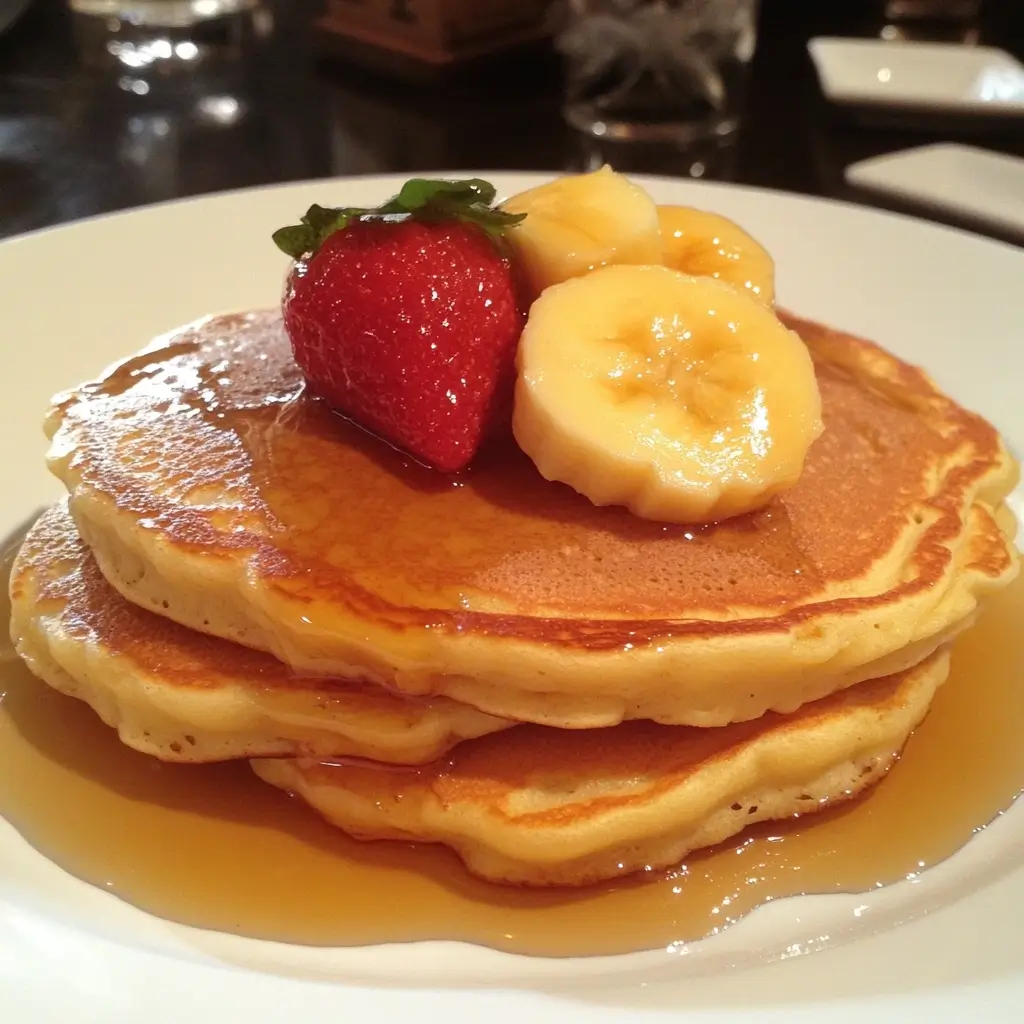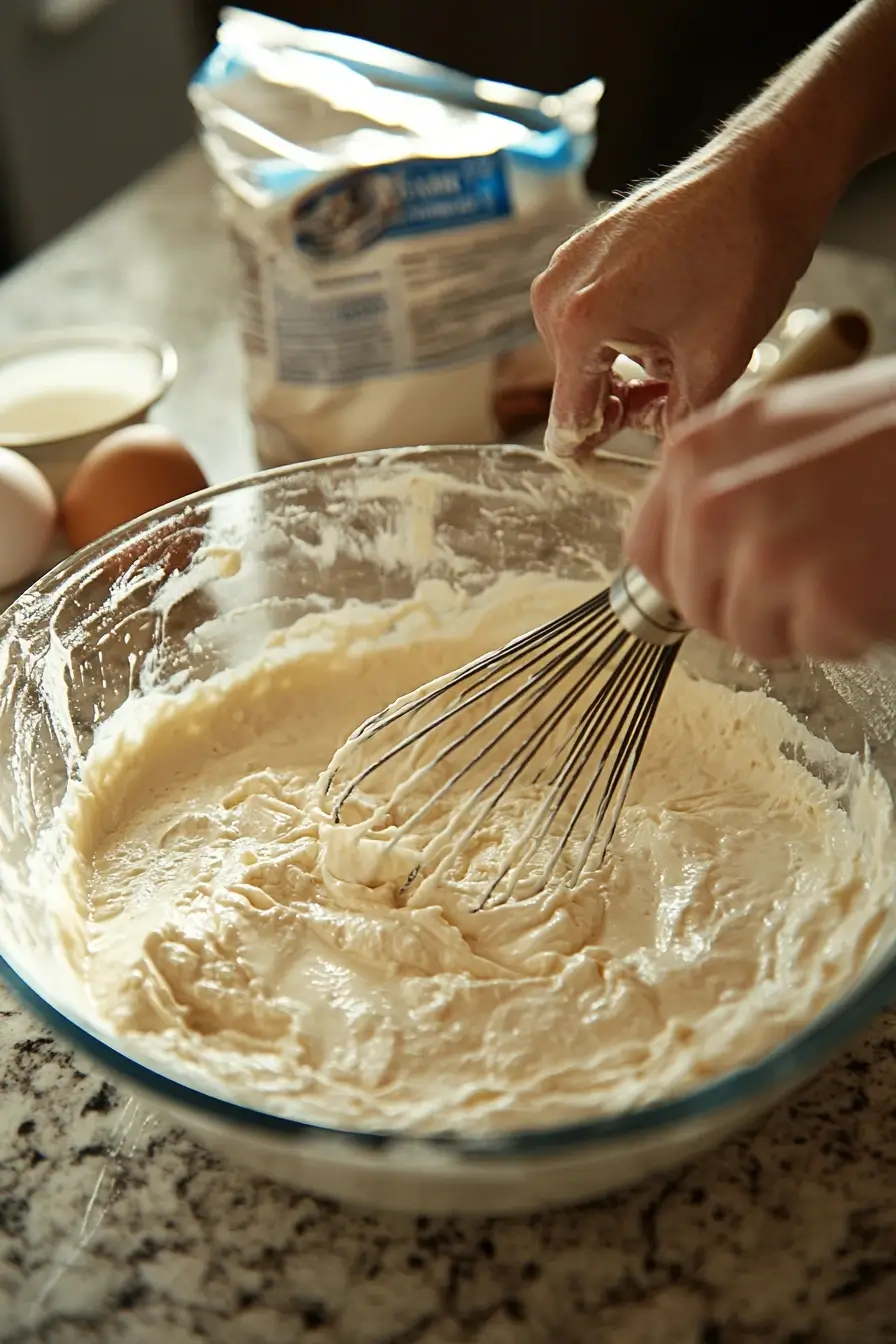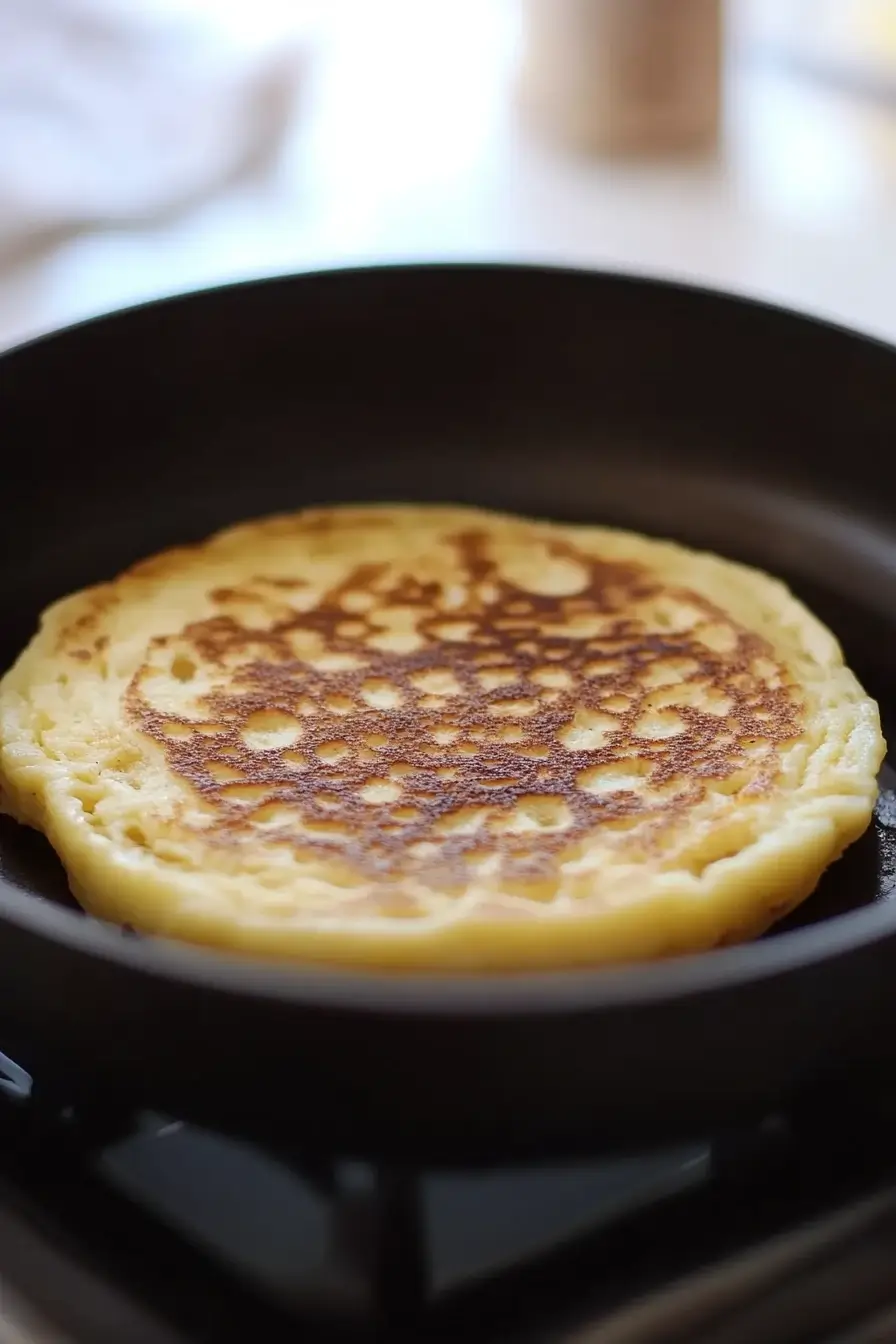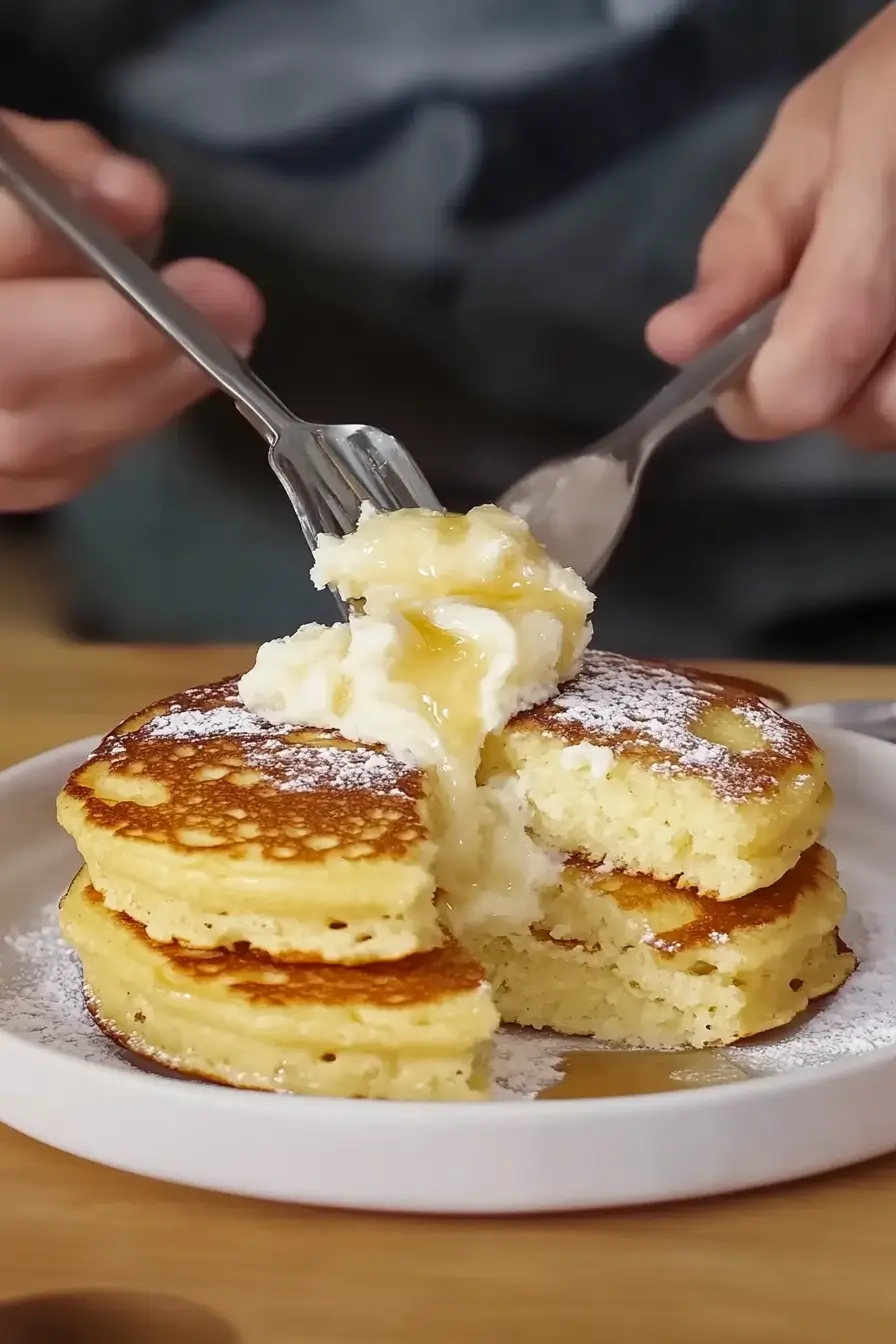Last updated on: February 21, 2025
Everyone loves a stack of thick, airy, and melt-in-your-mouth pancakes. But have you ever wondered, why are restaurant pancakes so fluffy compared to the ones you make at home? The secret isn’t just in the ingredients—it’s in the techniques, the science, and a few expert tricks that chefs use to create the perfect texture.
In this guide, we’ll break down seven proven secrets that make restaurant pancakes extra fluffy and show you how to replicate them in your own kitchen.

Table of Contents
Why Are Restaurant Pancakes So Fluffy? Understanding the Key Factors
Many home cooks struggle to get their pancakes as fluffy as the ones served in restaurants. The reason? It comes down to three main factors: ingredients, cooking techniques, and equipment.
The Science Behind Pancake Fluffiness
Fluffiness in pancakes is a result of air bubbles trapped inside the batter. When heat is applied, these air pockets expand, causing the pancakes to rise. Several factors contribute to this:
- Leavening agents (baking powder and baking soda) help create gas bubbles.
- The right mixing technique prevents overdeveloped gluten, which can make pancakes tough.
- Cooking at the correct temperature ensures even rising without burning.
How Ingredients Affect Texture
Using the right ingredients makes a huge difference in how pancakes turn out. Restaurants carefully select their ingredients to achieve maximum fluffiness.
- Flour choice: Cake flour or a mix of all-purpose flour and cornstarch makes pancakes lighter.
- Leavening power: A combination of baking powder and baking soda ensures proper rising.
- Egg whites: Some chefs whip egg whites separately to add extra air.
Why Cooking Methods Matter
The way you mix, rest, and cook your pancakes determines their texture. Some key techniques include:
✔️ Minimal mixing to avoid a dense batter.
✔️ Resting the batter to allow the flour to absorb moisture.
✔️ Cooking on a preheated griddle for even heat distribution.
With these basics covered, let’s dive into the first secret that makes restaurant pancakes so fluffy.
Secret #1: Choosing the Right Flour and Ingredients for Maximum Fluffiness

Why Cake Flour Creates a Lighter Texture
One of the biggest differences between restaurant pancakes and homemade ones is the type of flour used. Most home cooks use all-purpose flour, but many restaurants use cake flour for a lighter, softer texture.
- Cake flour has less gluten, which means pancakes stay tender instead of chewy.
- If you don’t have cake flour, you can make your own by mixing all-purpose flour with cornstarch (for every cup of flour, replace two tablespoons with cornstarch).
This small change can make a noticeable difference in how fluffy your pancakes turn out.
The Role of Baking Powder and Baking Soda
Leavening agents are crucial for making pancakes rise. Most restaurant recipes use a combination of baking powder and baking soda to create a double-rising effect.
- Baking powder is double-acting, meaning it releases gas twice—once when mixed with liquid and again when heated.
- Baking soda reacts with acidic ingredients like buttermilk to produce bubbles, making pancakes even fluffier.
Using both ensures pancakes rise properly and stay airy without collapsing.
How Buttermilk Reacts to Create Airiness
Many restaurants use buttermilk instead of regular milk. Why? Because buttermilk’s acidity:
- Activates the baking soda, producing more air bubbles.
- Softens the gluten in flour, resulting in a more delicate texture.
- Adds moisture, preventing dry pancakes.
Tip: If you don’t have buttermilk, make a substitute by mixing one tablespoon of lemon juice or vinegar into one cup of milk. Let it sit for five minutes before using.
Secret #2: How the Right Batter Consistency Affects Pancake Fluffiness
Why Overmixing Makes Pancakes Dense
A common mistake people make is stirring the batter too much. While it might seem like a good idea to get rid of lumps, overmixing develops too much gluten, making pancakes tough instead of fluffy.
- The batter should be slightly lumpy—this is normal.
- Stir only until the dry ingredients are just combined with the wet ones.
Less mixing = softer, fluffier pancakes!
The Best Batter Thickness for Extra Fluff
The thickness of your batter affects how much your pancakes rise.
- Too thick? Pancakes won’t spread properly, leading to uneven cooking.
- Too thin? They’ll spread too much and turn out flat.
The ideal batter should be thick but pourable. If it doesn’t slowly drip off a spoon, adjust by adding a bit more milk or flour.
Resting the Batter: Does It Really Help?
One of the biggest restaurant secrets is letting the batter rest before cooking.
- This allows the flour to absorb the liquid, leading to a smoother texture.
- It also gives the leavening agents time to start working, which results in better rising.
Let the batter sit for at least 10–15 minutes before cooking for fluffier, softer pancakes.
Essential Ingredients
| Ingredient | Quantity |
|---|---|
| Cake Flour | 2 cups |
| Buttermilk | 1 ½ cups |
| Baking Powder | 1 tbsp |
| Baking Soda | ½ tsp |
| Eggs | 2 large |
Secret #3: How Eggs Help Make Pancakes Extra Fluffy
Eggs play a crucial role in pancake fluffiness. They provide structure, moisture, and richness, helping pancakes rise properly. But have you ever wondered why restaurant pancakes feel softer and airier? The secret lies in how chefs handle and prepare eggs.
Separating Yolks and Whites for More Airiness
One trick that many restaurants use is separating the egg whites from the yolks. This technique adds extra air to the batter, making pancakes light and fluffy.
- Egg yolks contain fat, which makes pancakes rich and soft.
- Egg whites can be whipped to create tiny air pockets, which expand when cooked.
How to use this technique at home:
- Separate the yolks from the whites.
- Mix the yolks with the wet ingredients.
- In a separate bowl, beat the egg whites until soft peaks form.
- Gently fold the egg whites into the batter using a spatula—do not overmix!
By folding in the egg whites carefully, you trap air bubbles, which expand when the pancakes cook, creating restaurant-style fluffiness.
Why Whipped Egg Whites Add More Lift
Whipping egg whites introduces air pockets that help pancakes rise even higher. This method is often used in Japanese soufflé pancakes, which are incredibly light and airy.
- Soft peaks are best for regular pancakes.
- Stiff peaks are great for extra thick pancakes.
For added stability, some chefs add a pinch of cream of tartar when whipping egg whites. This helps the foam hold its shape better.
Using the Right Egg Ratio for Perfect Pancakes
Eggs are essential for structure, but using too many can make pancakes rubbery. Restaurants often follow this formula:
✔ 2 eggs for every 2 cups of flour → Balanced texture
✔ 3 eggs for extra fluffiness → More air pockets
✔ More than 3 eggs? → Risk of pancakes becoming too dense
By getting the egg ratio right, you can ensure that your pancakes have the perfect balance of fluffiness and tenderness.
Secret #4: Why Cooking Temperature and Techniques Matter

Even with the best ingredients, pancakes can turn out flat and dense if they’re not cooked properly. That’s why restaurants pay close attention to temperature and flipping techniques.
The Ideal Temperature for Fluffy Pancakes
Most restaurants cook pancakes at 375°F (190°C). This temperature allows the batter to rise gradually without burning.
How to test the heat:
✔ Sprinkle a few drops of water on the pan—if they sizzle and disappear quickly, the pan is ready.
✔ If the batter spreads too fast, the heat is too low.
✔ If the pancakes burn before they cook through, the heat is too high.
For the best results, use medium-low to medium heat and preheat the pan for at least 5 minutes before cooking.
When to Flip: Timing for the Perfect Rise
Flipping at the right time is crucial. If you flip too early, the inside won’t have enough time to rise. If you flip too late, the pancake can become dry.
Look for these signs before flipping:
✔ Bubbles form on the surface and begin to pop.
✔ The edges look set and slightly dry.
✔ The bottom is golden brown (lift with a spatula to check).
One flip is enough! Flipping multiple times can cause pancakes to deflate, making them less fluffy.
Why Low and Slow Cooking Creates Better Texture
Restaurants never rush pancakes. Cooking pancakes slowly at the right temperature allows the batter to rise evenly and prevents tough, dry pancakes.
- Too hot? The outside burns before the inside is cooked.
- Too cool? Pancakes spread out too much and don’t rise properly.
By keeping a consistent medium-low heat, you’ll get tall, fluffy pancakes every time.
Secret #5: How Restaurant Equipment Helps Make Pancakes Fluffier
Have you ever noticed that restaurant pancakes cook more evenly than homemade ones? That’s because they use high-quality equipment that ensures even heat distribution.
Why Cast Iron Skillets and Griddles Work Best
Many restaurants use cast iron skillets or commercial griddles to cook pancakes. Why? Because they hold steady heat, which allows the pancakes to cook evenly.
- Cast iron holds heat longer, preventing temperature drops.
- Flat griddles provide an even surface, so pancakes cook at the same rate.
- Electric griddles with temperature controls make it easier to cook at exactly 375°F.
If you’re using a regular frying pan, try switching to a cast-iron pan or a heavy-bottomed griddle for better results.
The Importance of Even Heat Distribution
Uneven heat is one of the biggest problems in home kitchens. Some parts of the pan heat up faster than others, leading to pancakes that cook unevenly.
How to fix it:
✔ Preheat the pan for 5 minutes before cooking.
✔ Spread a thin layer of butter or oil to prevent sticking.
✔ Use a griddle instead of a regular pan for consistent heat.
Non-Stick vs. Stainless Steel: What’s Better?
Some people use non-stick pans, while others prefer stainless steel. But which one is better for fluffy pancakes?
- Non-stick pans make flipping easier but don’t hold heat as well.
- Stainless steel pans distribute heat better but require a thin layer of oil to prevent sticking.
For restaurant-style pancakes, cast iron or an electric griddle is the best choice.
Secret #6: Why Steam and Moisture Are Key for Airy Pancakes
Have you ever noticed that restaurant pancakes stay soft and fluffy long after they’ve been cooked? The secret isn’t just in the batter—it’s also in how chefs control steam and moisture during the cooking process.
How to Keep Pancakes Moist Yet Fluffy
Pancakes can turn dry and dense if too much moisture escapes while cooking. Restaurants use a few clever techniques to ensure their pancakes remain light and tender:
- Using buttermilk or yogurt in the batter helps retain moisture.
- Cooking over medium-low heat allows the pancakes to cook through without losing too much steam.
- Covering the pan for a few seconds traps steam, helping pancakes rise even higher.
The goal is to balance moisture retention and even cooking so that the inside remains soft and airy, while the outside develops a golden-brown crust.
The Role of Steam in Pancake Fluffiness
When pancake batter hits the hot griddle, the water in the batter turns to steam. This trapped steam pushes the pancake upward, making it rise.
- If the batter is too thick, steam can’t escape properly, making pancakes gummy.
- If the batter is too thin, steam escapes too quickly, causing flat pancakes.
By maintaining the right batter consistency, you allow steam to work its magic, giving pancakes their signature fluffiness.
Covering the Pan: A Trick for Extra Lift
Most home cooks don’t cover the pan while making pancakes, but this simple trick can significantly improve their texture.
Why does it work?
- The lid traps steam, helping the pancakes rise higher.
- It keeps the cooking environment moist, preventing dry, dense pancakes.
- This method works especially well for thicker pancakes like Japanese soufflé pancakes.
How to do it:
- Pour the pancake batter onto the pan.
- Cover with a lid for 30–45 seconds.
- Remove the lid and continue cooking as usual.
This technique mimics the gentle cooking environment of restaurant griddles, ensuring perfectly soft and fluffy pancakes.
Secret #7: Restaurant Tricks for the Fluffiest Pancakes

Even with the right ingredients and techniques, restaurant pancakes still have an edge over homemade ones. That’s because chefs use a few extra tricks to guarantee perfectly fluffy results every time.
Why Double-Sifting Dry Ingredients Helps
Ever noticed how restaurant pancakes have a lighter, smoother texture than homemade ones? One key reason is sifting the dry ingredients twice.
Benefits of double-sifting:
✔ Removes lumps, leading to a smoother batter.
✔ Incorporates air, making pancakes lighter.
✔ Ensures even distribution of baking powder and baking soda for consistent rising.
How to do it:
- Sift the flour, baking powder, and baking soda into a bowl.
- Mix them together, then sift one more time before adding wet ingredients.
This small step significantly improves pancake texture, making them softer and fluffier.
How Professional Chefs Create the Airiest Pancakes
Restaurants don’t just rely on better ingredients—they also follow specific steps to enhance pancake fluffiness:
✔ Use a ladle or measuring cup to ensure even portions.
✔ Let the batter rest for at least 15 minutes before cooking.
✔ Use clarified butter instead of regular butter for better flavor and browning.
✔ Avoid pressing pancakes down with a spatula—this removes air pockets, making them dense.
The 2-Pan Flip Method for Extra Height
Some restaurants use a double-pan flipping technique to get their pancakes even fluffier.
How it works:
- Cook the pancake on one side until bubbles form and the edges look set.
- Instead of flipping onto the same pan, transfer it to a second preheated pan with a bit of butter.
- Let it cook for the remaining time.
This prevents heat loss during flipping, keeping pancakes tall and airy.
FAQs: Answering Your Pancake Questions
Many people have common pancake-related questions. Here are the answers to some of the most frequently asked ones.
What is Another Name for Mini Pancakes?
Mini pancakes go by different names around the world. Some of the most popular ones include:
- Silver Dollar Pancakes – Named for their small size, similar to an old silver dollar coin.
- Dutch Poffertjes – Small, puffy pancakes from the Netherlands, usually served with butter and powdered sugar.
- Japanese Dorayaki – Two small pancakes with a sweet filling in between, often red bean paste.
No matter the name, they all share one thing in common—a deliciously soft and fluffy texture.
Why Mini Pancakes Are the Perfect Breakfast Treat
Mini pancakes are a great breakfast choice because they:
✔ Cook faster than regular pancakes.
✔ Are bite-sized and easy to eat.
✔ Can be stacked and topped with a variety of ingredients.
They’re also perfect for kids, making breakfast fun and easy!
How Long Do You Cook Mini Pancakes For?
Mini pancakes cook much faster than full-sized ones. Here’s a simple guide:
- Cooking time: 1–2 minutes per side.
- Flip when bubbles form and the edges look dry.
- Use medium heat to avoid burning.
Because they are smaller and thinner, they need less cooking time, making them a quick and easy breakfast option.
Why Are Restaurant Pancakes So Fluffy?
Restaurant pancakes are fluffier because of:
✔ The right flour (cake flour or sifted all-purpose flour).
✔ The perfect leavening agents (a mix of baking powder and baking soda).
✔ Whipped egg whites for extra airiness.
✔ Resting the batter before cooking.
✔ Cooking at the right temperature (375°F or medium heat).
By following these tips, you can achieve restaurant-style fluffiness at home!
Final Thoughts: Making Perfectly Fluffy Pancakes at Home
Now that you know why restaurant pancakes are so fluffy, you can start making them at home with confidence. By using the right ingredients, cooking techniques, and expert tricks, you’ll be able to achieve soft, airy, and delicious pancakes every time.
So, the next time you crave thick and fluffy pancakes, remember these secrets—and get ready to impress everyone at the breakfast table!
If you love pancakes, don’t miss these top-rated mini pancake recipes for a quick and tasty breakfast!

